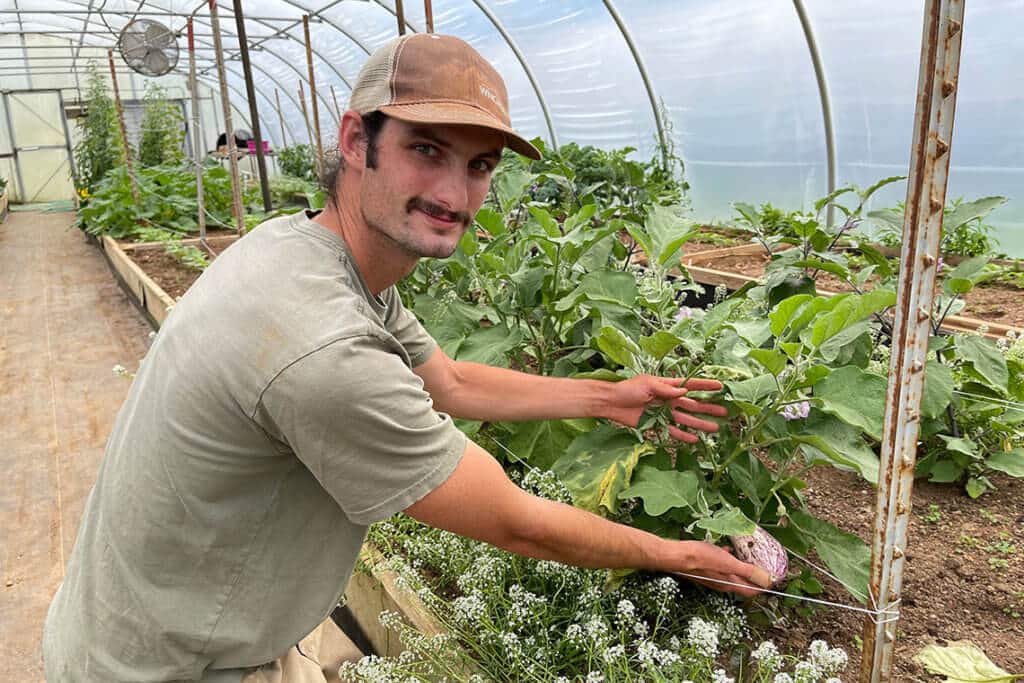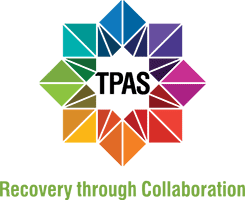What is horticultural therapy? Horticultural therapy (HT) is an evidence-based therapeutic method that engages participants in growing and caring for plants as a structured, hands-on way to support mental health. Therapists who specialize in HT are trained in both clinical mental health and plant care. The mental health recovery program at The Farm at CooperRiis offers horticultural therapy as a work crew option for all residents.
How Horticultural Therapy Helps Heal the Brain
Many of us love plants and can agree there’s something deeply rewarding about caring for them. Beyond simple pleasures, however, hidden forces hold fascinating and powerful keys to understanding why.
Horticultural Therapy & Neuroplasticity
So much of how we experience the world is hard-wired into our brains via the autonomic nervous system. That’s the part of the nervous system that handles involuntary processes such as heart rate, blood pressure, and cortisol production. The latest science seems to indicate that disharmony in this little “corner” of the human nervous system can be a driver of many pathologies, including some conditions we consider mental illnesses.
As residents at our healing farm work through their recovery, so much of the healing they do takes place underneath the surface. One major “hidden” process is that of learning nervous-system safety. Through every little thing, each day, the residents’ nervous systems are developing a habit of calm, which appears to have the power to create new, healthier neurocircuitry in the brain.
There are some things we know contribute to this sense of safety within the nervous system, and they’re baked into daily life at The Farm. These include (but aren’t limited to):
- Positive social connection
- Time outdoors and sunlight exposure
- Contact with nature
- Slow, deep breathing
- Safe, predictable sensory input
- Grounding in the senses
- Rhythmic movement
- Regular sleep schedule
- Mindful focus and learning
- Purposeful, rewarding activity
Most of these practices are either part of or benefits from horticultural therapy, making it a kind of multiplier for nervous-system healing.
Gently Imposed Responsibility
Work crews, like everything at The Farm, are voluntary. Each person chooses to show up each day. As such, we’re offering a structure, not imposing one. Many of our residents would resist an imposed structure, and while they benefit profoundly from having it, they may also struggle to create their own. This is where the plants come in.
Plants call on us ever so gently to show up for them, and before we know it, we’re happily responsible for a whole living thing. In the greenhouse at CooperRiis, each person has their own plants to care for on workdays and weekends alike. And we find that they overwhelmingly embrace this responsibility with care and enthusiasm.
Social & Life Skills, Not Trade Skills
Work crews at The Farm are not expected to learn the trade or even be productive in a conventional sense. These may be happy side effects, but the goal is to be part of a team. The members of the work crews show up as much for one another as for any other reason, knowing that the team is counting on them to be there.
Getting up in the morning, getting ready for the day, arriving at an appointed time, and doing their part, are essential life skills that have been hard for some residents to develop as they’ve struggled with their mental health. Getting along with others, resolving conflict constructively, and clearly expressing needs, feelings, and boundaries are other big life skills that often arise from this simple greenhouse work.
What is Horticultural Therapy at CooperRiis Like?
Every new resident spends a day working with each crew, and then they choose the one they want to stay with. While individuals can request a crew change after a few weeks, it’s more typical that the same people work in the greenhouse together for a few months. At any given time, this year-round crew may comprise anywhere from one to four resident(s).
With the support of CooperRiis’ horticultural therapist of 22 years, Markus Wullimann, crew members build life skills such as reliability, teamwork, stamina, and follow-through. Markus tailors activities to each person’s comfort levels and self-directed therapeutic goals, from delicate and meditative seeding work that supports fine motor coordination to simple, grounding tasks like pot washing or plant watering.
The Greenhouse Experience
Many residents come to us having lost their connection with nature, or sometimes never having had it. The Farm’s 2000-square-foot, climate-controlled greenhouse offers a gentle access point to nature that can accommodate all levels of physical ability. For example, while gardening outdoors involves standing, walking, and bending, the greenhouse has stools, and the plants are located at waist level.
Plenty of greenhouse crew members come to us with phobias or sensory needs, too. The totally enclosed greenhouse keeps us out of the elements, but with space enough to move and choose between working alongside others or solo. Markus supports residents in caring for their sensory needs, ensuring each person can engage comfortably. For example, someone who isn’t comfortable touching soil can choose to water plants instead or wear latex gloves while handling soil. If someone desires to address a specific fear or sensitivity, Markus helps them do so gently and on their own terms.
While residents with specific sensory needs develop self-accommodation skills, the greenhouse meanwhile provides rich and predictable sensory input. Orchids, succulents, tropical plants, and seasonals like poinsettias and mums, plus seedlings for the garden offer textures, colors, scents, and even tastes to engage our senses, deepening the connection to nature.
Sense of Purpose
In addition to the day-to-day and accumulating benefits of the greenhouse’s environment and rhythm, crew members also get to see the effect of their efforts in a variety of ways:
- Many of the vegetables we eat at dinnertime come straight from the on-site garden, which means they all started as seedlings in the greenhouse.
- The mums on every table at Thanksgiving and the poinsettia centerpieces at Christmastime? All grown by the greenhouse crew!
- And, while most of The Farm’s edibles do their fruiting in the garden, we make a point of keeping a rotation of microgreens growing in the greenhouse. These tasty, healthy snack-size greens pop up in a few days, satisfying even the most impatient among us.
Purpose is one of the four main pillars of mental health recovery because of its long-term implications. We work with residents to build purpose from the day they arrive, in big ways like the Dream Statement, and in little everyday ways, like a handful of microgreens garnishing every resident’s plate at lunch.
Benefits and Outcomes of Horticultural Therapy at The Farm
Aside from the scientific research to indicate profound benefits of HT, we observe some promising signs in the relatively short time that residents are with us. Greenhouse crew members:
- Take good care of the plants they’re responsible for, even visiting the greenhouse on the weekends to water or weed.
- Are often found spending leisure time in the greenhouse, reading a book or just sitting in contemplation.
- Ask to start some plants that they can take home when they leave CooperRiis.
A few residents over the years have even gone on to become professional horticulturists. While vocation is not the goal of the work crew experience, we take this as a sign that those residents came to feel comfortable, safe, and happy working in our greenhouse. And this means the world to us!
What is The Farm at CooperRiis?
The Farm at CooperRiis is a community-based healing community that provides mental health care using the recovery model and the natural rhythms of a working farm. Every activity is 100% voluntary and designed to help residents develop social and life skills. The Farm welcomes adults with depression, anxiety, bipolar disorder, schizophrenia, PTSD, and personality disorders. We also accommodate neurodiversity, including ADHD, dyslexia, Level 1 autism, and more.









